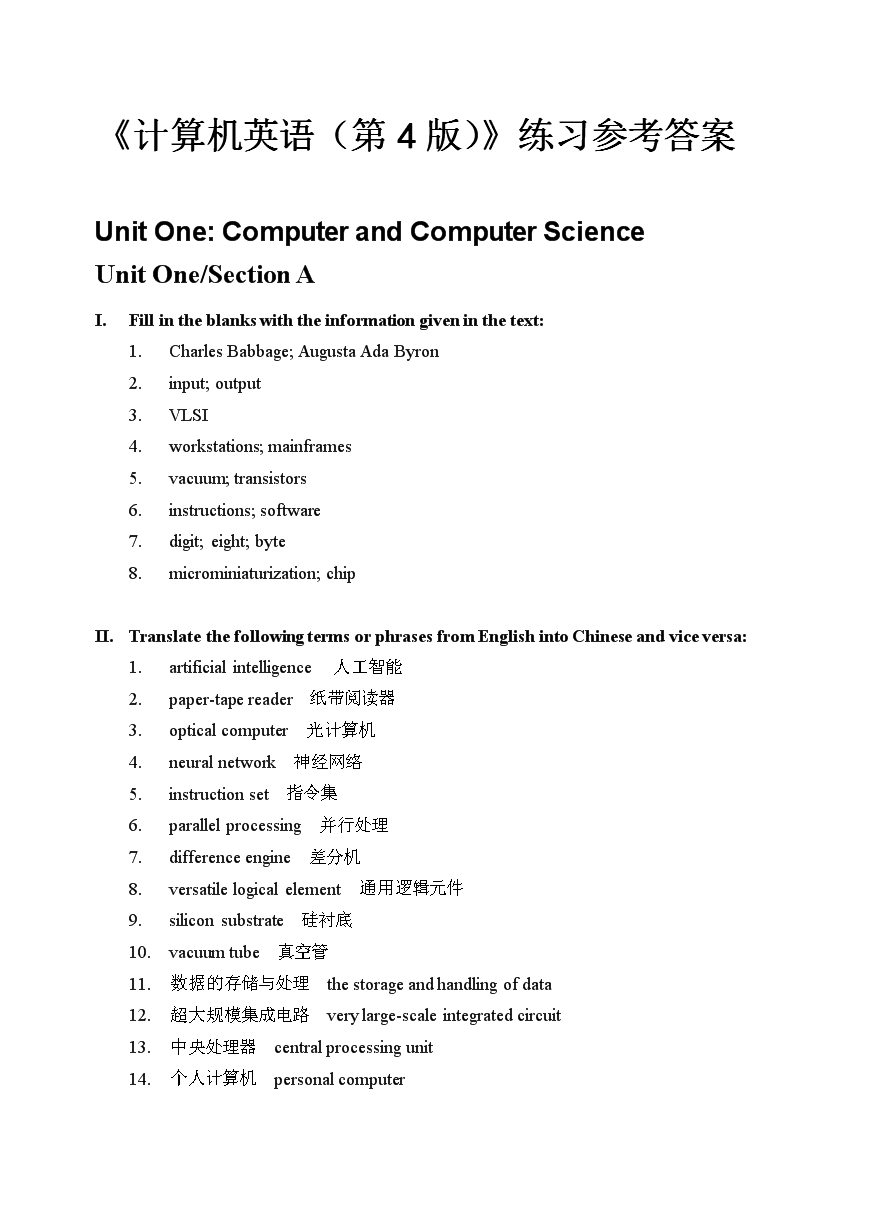本文主要是介绍计算机英语课后题答案解析,《计算机英语(第版)》课后练习参考答案要点分析.doc...,希望对大家解决编程问题提供一定的参考价值,需要的开发者们随着小编来一起学习吧!
[摘要]《计算机英语(第4版)》练习参考答案 Unit One: Computer and Computer Science Unit One/Section A I. Fill in the blanks with the information given in the text: 1. Charles Babbage; Augusta Ada Byron 2. input; output 3. VLSI 4. workstations; mainframes 5. vacuum; transistors 6. instructions; software 7. digit; eight; byte 8. microminiaturization; chip II. Translate the following terms or phrases from English into Chinese and vice versa: 1. artificial intelligence 人工智能 2. paper-tape reader 纸带阅读器 3. optical computer 光计算机 4. neural network 神经网络 5. instruction set 指令集 6. parallel processing 并行处理 7. difference engine 差分机 8. versatile logical element 通用逻辑元件 9. silicon substrate 硅衬底 10. vacuum tube 真空管 11. 数据的存储与处理 the storage and handling of data 12. 超大规模集成电路 very large-scale integrated circuit 13. 中央处理器 central processing unit 14. 个人计算机 personal computer 15. 模拟计算机 analogue computer 16. 数字计算机 digital computer 17. 通用计算机 general-purpose computer 18. 处理器芯片 processor chip 19. 操作指令 operating instructions 20. 输入设备 input device III. Fill in each of the blanks with one of the words given in the following list, making changes if necessary: We can define a computer as a device that accepts input, processes data, stores data, and produces output. According to the mode of processing, computers are either analog or digital. They can also be classified as mainframes, minicomputers, workstations, or microcomputers. All else (for example, the age of the machine) being equal, this categorization provides some indication of the computer’s speed, size, cost, and abilities. Ever since the advent of computers, there have been constant changes. First-generation computers of historic significance, such as UNIVAC (通用自动计算机), introduced in the early 1950s, were based on vacuum tubes. Second-generation computers, appearing in the early 1960s, were those in which transistors replaced vacuum tubes. In third-generation computers, dating from the 1960s, integrated circuits replaced transistors. In fourth

这篇关于计算机英语课后题答案解析,《计算机英语(第版)》课后练习参考答案要点分析.doc...的文章就介绍到这儿,希望我们推荐的文章对编程师们有所帮助!






